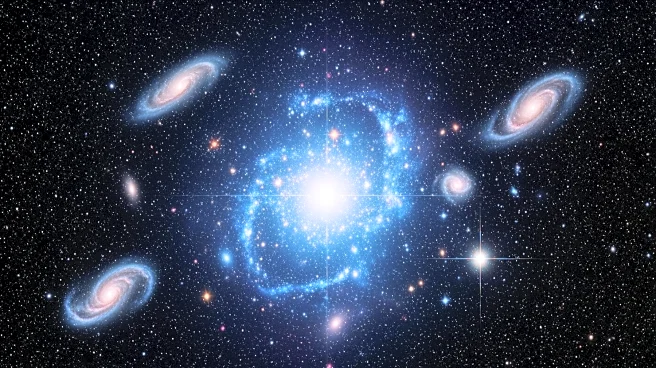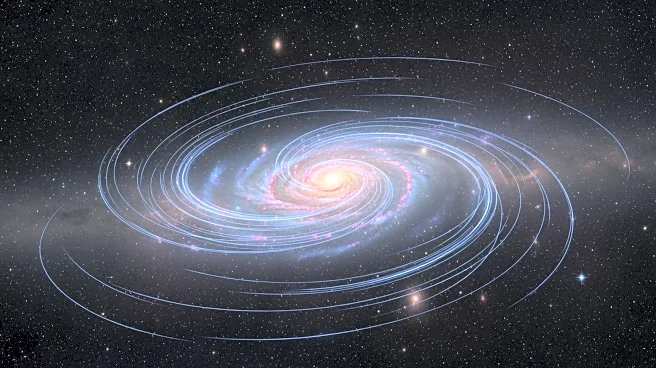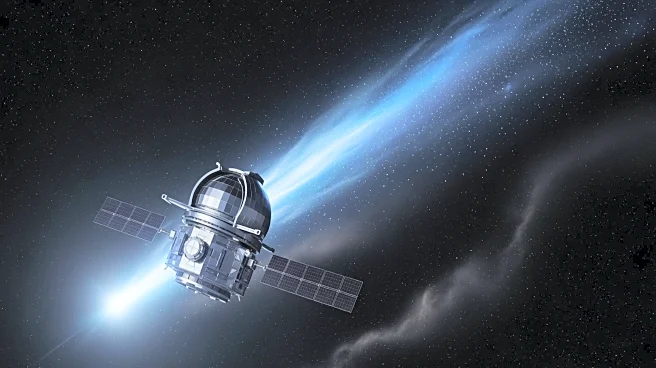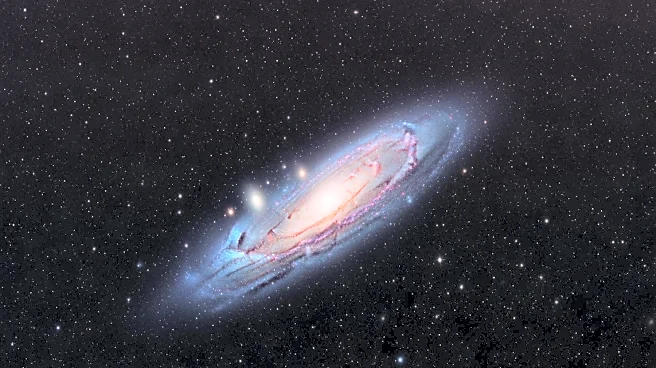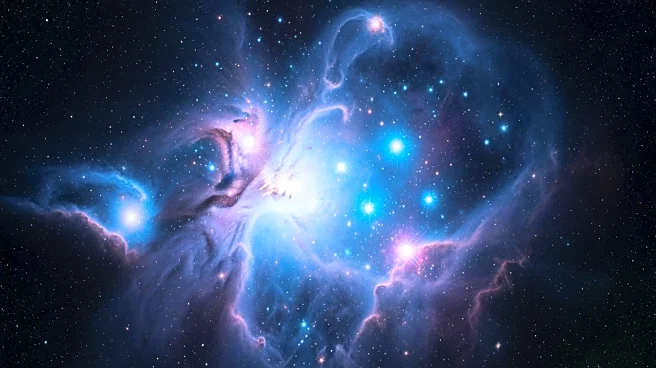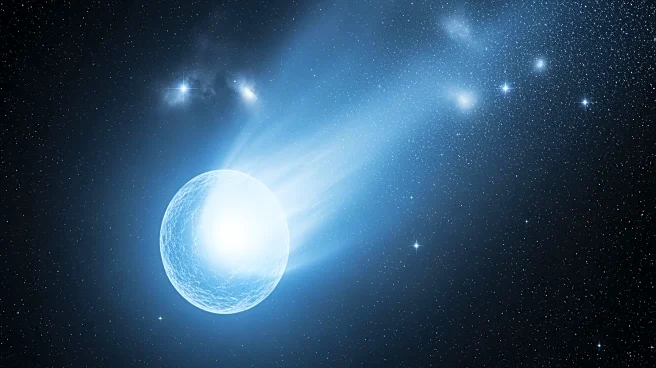What's Happening?
The James Webb Space Telescope has observed a young galaxy, SXDF-NB1006-2, in the early universe, forming stars at a rate of 165 solar masses per year. This galaxy, appearing when the universe was less
than 500 million years old, is undergoing intense star formation, producing large, bright stars that lead to significant outflows of gas. These outflows, moving at speeds over 310 miles per second, prevent the gas from returning, potentially depleting the galaxy's ability to form new stars.
Why It's Important?
The discovery of SXDF-NB1006-2 provides insights into the behavior of early galaxies and their star formation processes. Understanding these dynamics helps astronomers learn about the evolution of galaxies and the conditions of the early universe. The rapid star formation and gas outflows observed in this galaxy challenge existing models, prompting further research into galaxy development and the factors influencing star creation.


